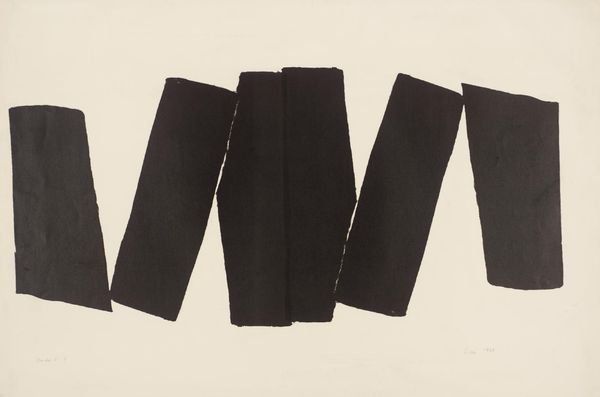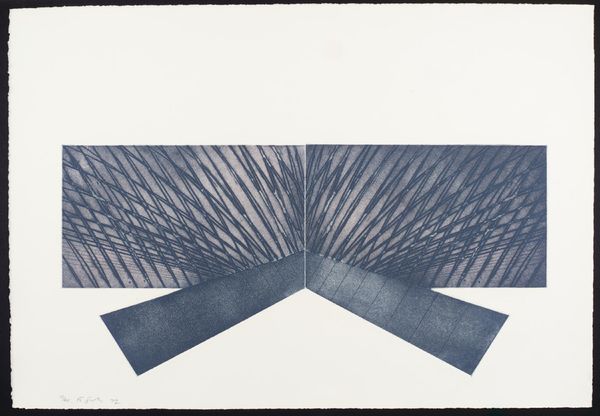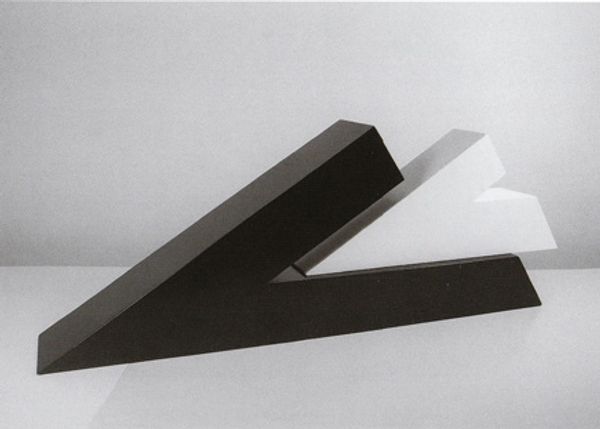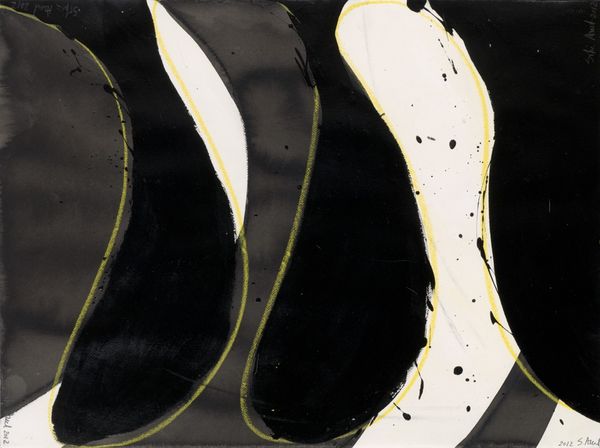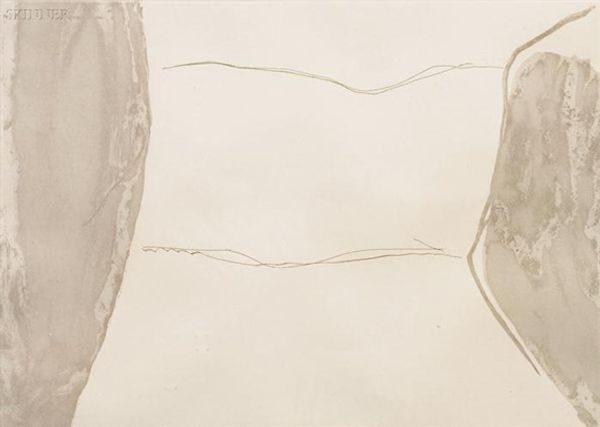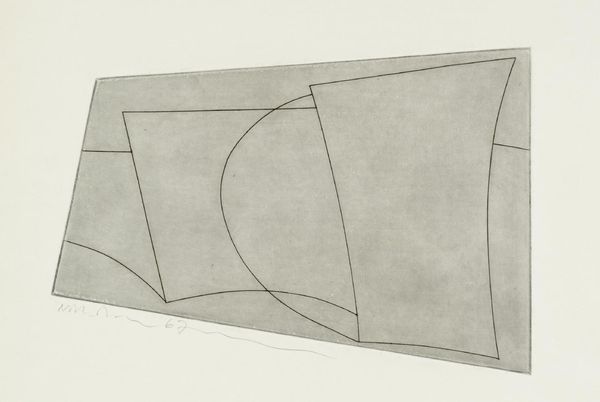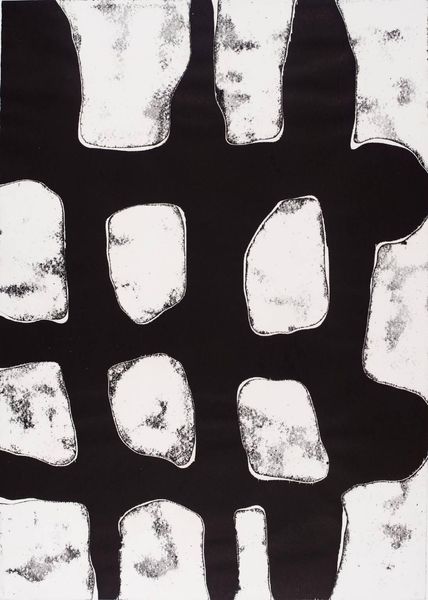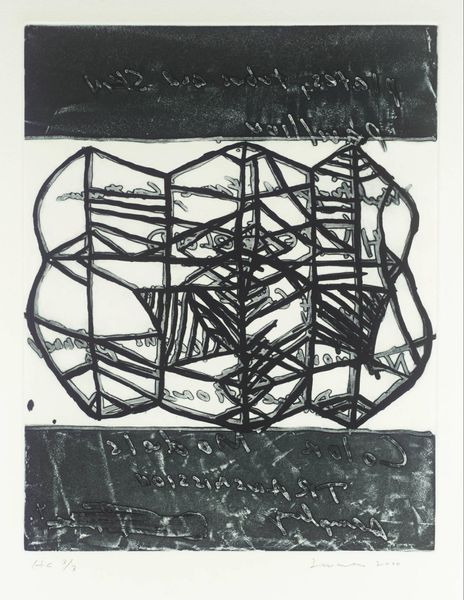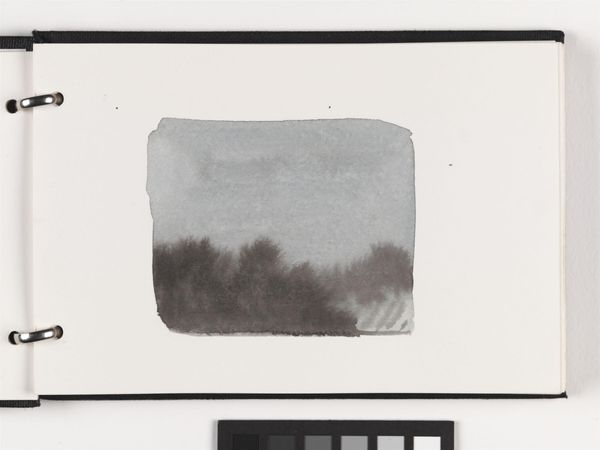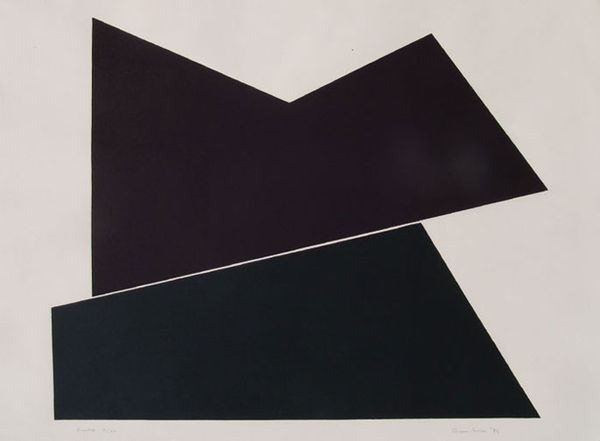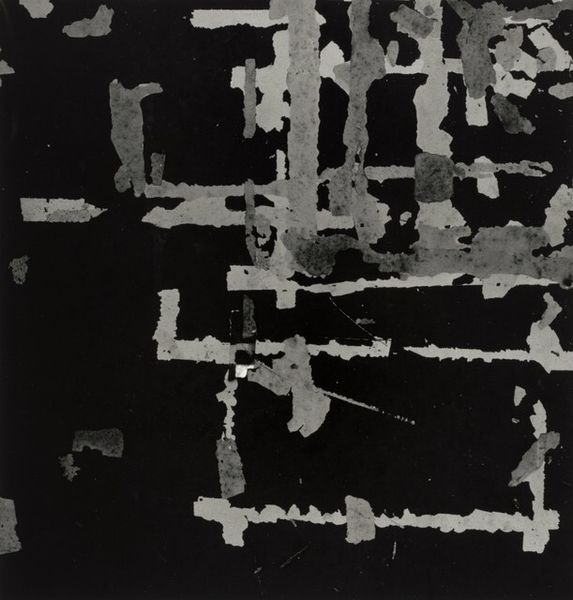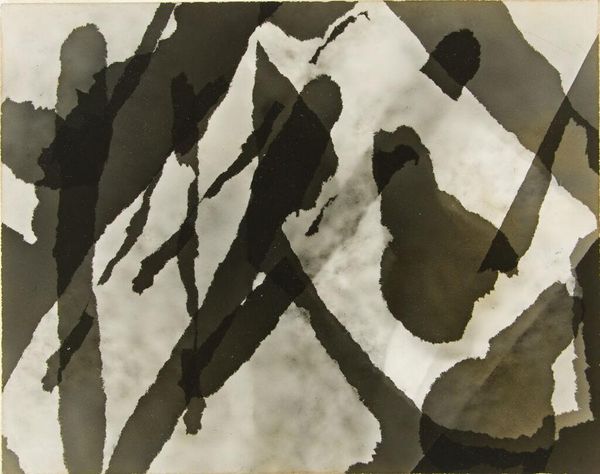
drawing, ceramic
#
drawing
#
greek-and-roman-art
#
ceramic
#
vase
#
geometric
#
ancient-mediterranean
#
abstraction
#
line
Copyright: Public Domain
Curator: What we're seeing here are fragments of an ancient Greek kylix, or drinking cup. These ceramic pieces, attributed to Epiktetos, date back to around 525 BC. They offer a fascinating glimpse into the artistry of the time, though only a glimpse given their incomplete state. Editor: There’s a striking austerity in these remnants. The stark black and white and sharp lines give them an almost modern feel. It's easy to overlook the age given the graphic strength of these pieces, particularly with how incomplete they are now. Curator: Indeed. Kylixes like these were important vessels in symposia, or male drinking gatherings. They held social significance as integral components to expressing the community. Examining the wider historical role and the use-life of these cups, tells us more than if we look solely at aesthetic qualities, doesn't it? Editor: Well, precisely how those aesthetic qualities served specific symbolic functions within the social context fascinates me! Consider the painted 'eyes' seen in fragments of this type, ostensibly warding off evil, but undoubtedly loaded with layers of cultural meaning. I’m also struck by the intentional abstraction – the use of lines to denote form in a minimal way. It connects so powerfully to very basic symbolic human visual language. Curator: What’s key to note is the prevalence of the black-figure style in Athenian pottery, and its eventual supersession by the red-figure technique a few decades later. Understanding how the style itself evolved provides important information about artistic developments as impacted by access to materials and the patronage system in place at the time. The political implications of an Athenian workshop's ability to innovate a style and garner artistic attention would have massive ramifications! Editor: But what did it signify to its user, regardless of workshop innovations or Athenian politics? These abstract "eyes," that curvature - doesn't it echo the cyclical nature of life, the continuous "seeing" even through darkness? And what about the choice of color for decoration. Red isn't just pigment choice, is a deliberate emphasis on the hue connected to life, ritual, memory and countless associated ideas. Curator: Interesting… Ultimately, what remains is a set of incomplete yet suggestive geometric components – what it conveys, or may once have conveyed. They also represent but the remains of an important moment in the timeline of Athenian ceramics and painting industries. Editor: It is intriguing how such fragments manage to resonate.
Comments
No comments
Be the first to comment and join the conversation on the ultimate creative platform.
